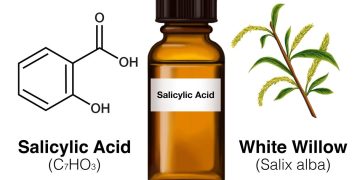The search for eternal youth has been ongoing for centuries, with humans continually seeking ways to reverse the hands of time. One of the most popular and effective methods to achieve a more youthful appearance today is through the use of skin fillers. These injectable treatments, often referred to as dermal fillers, are widely used to smooth wrinkles, restore facial volume, and enhance certain facial features. But are skin fillers truly the secret to ageless skin, or are they just a temporary fix? This article will explore the effectiveness, risks, best practices, and everything you need to know about skin fillers.
What Are Skin Fillers?
Skin fillers, also known as dermal fillers, are substances injected beneath the skin to restore lost volume, smooth lines, and enhance facial contours. They are commonly used to treat areas like the cheeks, under the eyes, lips, and around the nose and mouth. Fillers work by adding volume to areas of the face that may have lost fat or elasticity due to aging or other factors.
The most commonly used fillers are made from substances like hyaluronic acid, calcium hydroxylapatite, poly-L-lactic acid, and polymethylmethacrylate. Each filler type has its own benefits and is used for different purposes, depending on the depth of the wrinkles, the area to be treated, and the patient’s skin type.
The Effectiveness of Skin Fillers
Skin fillers are effective in improving the appearance of aging skin, particularly when it comes to volume loss and the reduction of wrinkles. As we age, our skin loses collagen, elastin, and fat, leading to a sagging appearance, hollow cheeks, and deep lines. Fillers address these issues by adding volume and stimulating collagen production.
One of the most significant benefits of skin fillers is their immediate results. Unlike creams or serums that take weeks or months to show results, dermal fillers can provide noticeable improvement immediately after the treatment. Wrinkles and fine lines are softened, and the face appears fuller and more youthful. The treatment is minimally invasive, and there is no need for surgery, making it an attractive option for people looking for quick cosmetic enhancements without the risks associated with surgery.
Hyaluronic acid-based fillers, in particular, are highly effective because they not only restore volume but also help in drawing moisture to the skin, which enhances skin hydration. This results in a plumper, more radiant appearance. Furthermore, hyaluronic acid fillers can last anywhere from six months to two years, depending on the specific filler used and the treatment area.
Calcium hydroxylapatite fillers, on the other hand, are ideal for deeper wrinkles and facial volume restoration. These fillers stimulate collagen production, providing longer-lasting effects and helping to improve the skin’s texture over time.
Are There Risks Associated with Skin Fillers?
While skin fillers are generally considered safe when administered by a licensed and experienced professional, there are some risks and side effects associated with the procedure. The most common side effects are mild and temporary, such as redness, swelling, bruising, and tenderness at the injection site. These side effects typically subside within a few days to a week.
In rare cases, more serious complications can occur. These may include:
- Infection: Like any injectable treatment, there is a risk of infection. However, the risk can be minimized by ensuring that the procedure is performed in a sterile environment by a qualified practitioner.
- Lumps or bumps: Sometimes, filler can form lumps or bumps beneath the skin. These can usually be massaged out, but in some cases, they may require further treatment.
- Allergic reactions: Although rare, some individuals may experience allergic reactions to the materials used in dermal fillers. This is more likely with non-hyaluronic acid fillers.
- Tissue damage: If the filler is injected too deeply or incorrectly, it could cause damage to the surrounding tissues, leading to skin discoloration, scarring, or even necrosis (tissue death). This underscores the importance of seeking treatment from a skilled and experienced practitioner.
- Migration: Occasionally, the filler may shift or migrate from the original injection site, leading to uneven results.
While these risks can occur, they are relatively uncommon when treatment is performed by a licensed and skilled provider. It is essential to choose a qualified dermatologist or plastic surgeon with experience in administering dermal fillers to reduce the likelihood of complications.

Best Practices for Using Skin Fillers
To ensure the best results and minimize risks, it’s important to follow certain best practices when considering skin filler treatments.
- Consultation is Key: Before undergoing any filler treatment, it’s crucial to have a thorough consultation with your practitioner. During this consultation, you’ll discuss your medical history, aesthetic goals, and any potential risks. The practitioner will assess your skin and decide which type of filler is best suited for your needs.
- Choose a Qualified Practitioner: The skill of your practitioner is one of the most important factors in the success of your treatment. Be sure to choose a licensed professional who has experience with dermal fillers. They should be able to provide you with before-and-after photos of previous patients, explain the risks and benefits of the procedure, and make sure you have realistic expectations.
- Follow Aftercare Instructions: After the procedure, it’s important to follow your practitioner’s aftercare instructions. This may include avoiding strenuous exercise, applying ice to reduce swelling, and refraining from touching or massaging the treated areas for a certain period. Following these instructions will help minimize the risk of complications and ensure that the results last longer.
- Be Realistic About Results: While dermal fillers can provide significant improvements to your appearance, they are not a permanent solution. The results typically last between six months and two years, depending on the type of filler used and the area treated. It’s essential to have realistic expectations and understand that maintenance treatments will be necessary to keep up with the results.
- Know When to Stop: Not everyone is a suitable candidate for dermal fillers. If you are looking for dramatic changes to your face or you are under the impression that fillers will fix a much larger issue, such as sagging skin, surgery may be a more appropriate solution. Fillers are best for those looking for subtle enhancements rather than drastic changes.
Alternative Treatments to Skin Fillers
While skin fillers are highly effective, they are not the only option for people seeking a more youthful appearance. There are several alternative treatments that can be considered depending on your needs and preferences.
- Botox: Botox is another popular injectable treatment that temporarily paralyzes muscles to reduce the appearance of dynamic wrinkles, such as crow’s feet and frown lines. Unlike dermal fillers, Botox does not restore volume but is often used in combination with fillers for a comprehensive anti-aging treatment.
- Laser Skin Resurfacing: Laser treatments, such as fractional CO2 laser, can help tighten the skin and reduce wrinkles by stimulating collagen production. These treatments can improve skin texture and tone, making them a good option for people with sun-damaged or aged skin.
- Chemical Peels: A chemical peel is a treatment that involves applying a chemical solution to the skin to remove dead skin cells and promote new cell growth. It can help smooth wrinkles, lighten dark spots, and improve overall skin texture.
- Facelift Surgery: For those looking for more permanent results, a facelift might be the best option. Facelifts are invasive procedures that lift and tighten the skin, addressing sagging and deep wrinkles. They require more recovery time but offer longer-lasting results than fillers.
The Future of Skin Fillers
The future of skin fillers looks promising, with continuous advancements in both the types of fillers available and the techniques used to administer them. Newer fillers are being developed that offer longer-lasting effects, faster recovery times, and more natural-looking results. Additionally, the use of regenerative medicine, such as stem cells and platelet-rich plasma (PRP), may further enhance the efficacy of skin fillers by promoting collagen production and tissue healing.
As with all cosmetic treatments, the key to success is personalization. The best filler for one person may not be the best for another, and treatments should always be tailored to the individual’s unique needs and aesthetic goals.
Conclusion
Skin fillers have revolutionized the way we approach age-related changes in our appearance. They are a non-invasive and highly effective way to restore volume, smooth wrinkles, and enhance facial contours. However, they are not without risks and require careful consideration before undergoing treatment. By understanding how fillers work, knowing the potential side effects, and following best practices, you can make an informed decision about whether they are the right solution for you. With the right practitioner and realistic expectations, dermal fillers can indeed be a powerful tool in the pursuit of ageless skin.












































